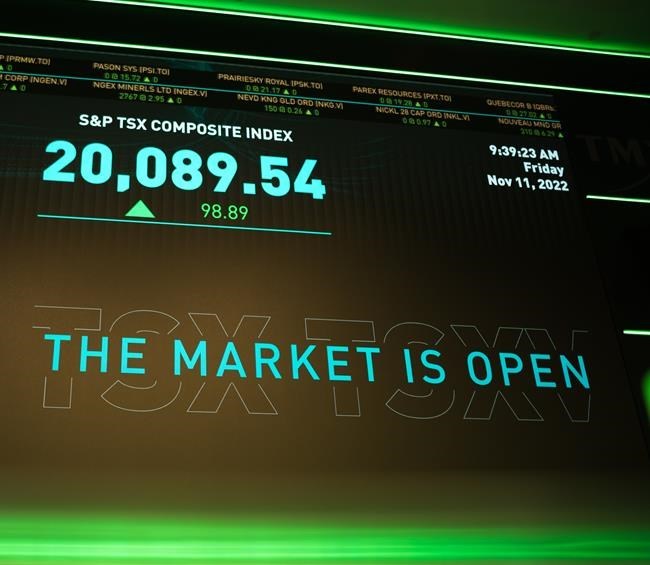TORONTO — Markets in Canada and the U.S. slipped for a second day in a row, with losses in energy, information technology, utilities and metals leading Canada's main stock index downward. Â
The S&P/TSX composite index was down 73.38 points at 19,884.58. The energy index was down 0.56 per cent, while utilities were down 1.24 per cent, information technology 1.80 per cent, base metals 1.86 per cent and battery metals 2.35 per cent.Â
In New York, the Dow Jones industrial average was down 7.51 points at 33,546.32.The S&P 500 index was down 12.23 points at 3,946.56, while the Nasdaq composite was down 38.70 points at 11,144.96.
Investors are taking a pause after last week’s surprisingly optimistic inflation numbers out of the U.S., said Vincent Tonietto, a senior vice-president and portfolio manager at Fiduciary Trust Canada. He said now investors are trying to anticipate what could come next, including when it comes to central banks’ final meeting of the year.
Investors are looking at the data and asking themselves, “What's coming up next? And ultimately, what's the economic cost of achieving those numbers?” said Tonietto.Â
Both the Canadian and U.S. central banks have signalled another rate hike is coming in 2022, but the question of how big those hikes will be is still on investors’ minds, especially after Canadian inflation data this week was not as sunny as the U.S.Â
Inflation in Canada stayed steady in October at 6.9 per cent.Â
On Thursday, a Fed official said the central bank may have to continue hiking in order to curb inflation.
Tonietto said after inflation and rate hike surprises in the past month, it’s best to “expect the unexpected" moving into the rest of 2022.Â
“You still have to be humble and be open-minded about what’s going to happen next,” he said.Â
On Friday, Canadian producer price data might give the market a better sense of what’s to come, said Tonietto. Producer price data this week out of the U.S. confirmed last week's U.S. inflation number, showing a slowdown in growth.Â
The Canadian dollar traded for 74.91 cents US, compared with 75.13 cents US on Wednesday.
The January crude oil contract was down US$3.60 at US$81.40 per barreland the December natural gas contract was up 17 cents at US$6.37 per mmBTU.
Oil is sliding on fear of a slowdown in the global economy, said Tonietto; though China recently loosened some of its COVID policies, rising cases have investors fearing they will tighten again, affecting demand for oil.
The December gold contract was down US$12.80 at US$1,763.00 an ounce and the December copper contract was down nine cents US$3.69 a pound.
—With files from The Associated Press
This report by The Canadian Press was first published Nov. 17, 2022.
Companies in this story: (TSX:GSPTSE, TSX:CADUSD=X)
Rosa Saba, The Canadian Press

